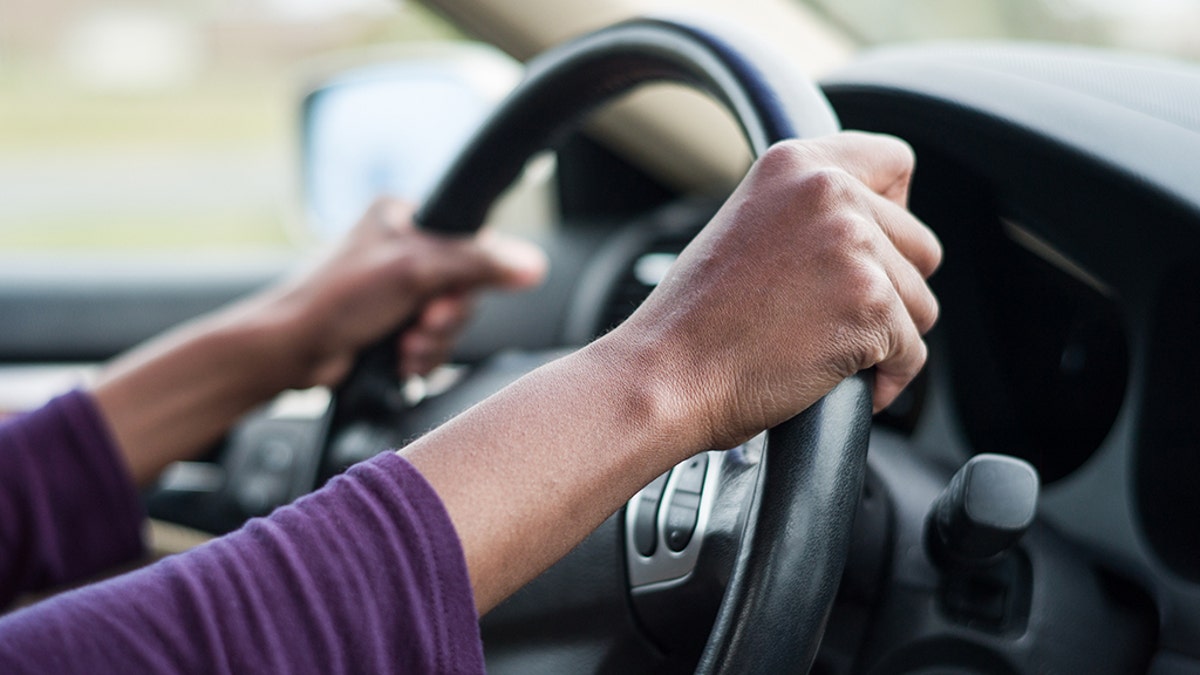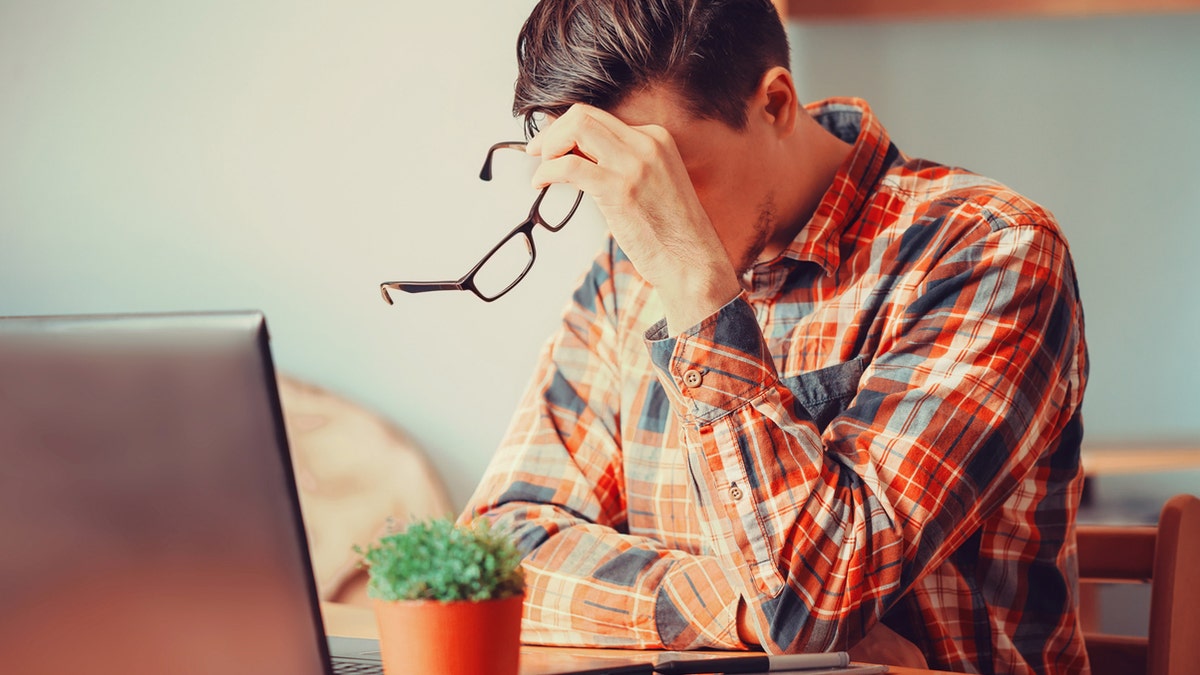While drunk driving can lead to deadly consequences, so can drowsy driving.
With Drowsy Driving Prevention Week beginning soon — it runs Nov. 6-13 — the National Sleep Foundation (NSF) is warning of the dangers of drowsy driving and sharing tips to prevent this behavior in the first place.
"Drowsy driving is impaired driving — just like drunk, drugged and distracted driving—and it’s a public health issue," said Joseph Dzierzewski, Ph.D., vice president of research and scientific affairs at the National Sleep Foundation, headquartered in Washington, D.C.
GET BETTER SLEEP AT NIGHT WITH THE HELP OF 10 SMART PRODUCTS
"Most people understand it’s risky, but they don’t think about the consequences," he added.
The National Highway Traffic Safety Administration (NHTSA) estimates that drowsy driving led to 633 deaths in 2020 and reported 11,654 alcohol-imired-driving fatalities in 2020.

"Drowsy driving causes thousands of car crashes each year, killing an estimated 6,400 people in the U.S. alone." (iStock)
Unlike drunk driving, however, it’s difficult to quantify the true annual number of car crashes caused by drowsy driving.
That's because NHTSA relies on police and hospital reports to find instances of drowsy-driving crashes, according to its website.
DROWSY DRIVERS OFTEN BEHIND FATAL CRASHES
"Drowsy driving causes thousands of car crashes each year, killing an estimated 6,400 people in the U.S. alone," Dzierzewski of NSF told Fox News Digital.
"Males under the age of 26 are in the highest risk group for drowsy driving."
"Any driver can become fatigued behind the wheel," he said. "but males under the age of 26 are in the highest risk group for drowsy driving, with 55% of drowsy driving crashes involving those under 25 years old."
Look how many drivers can't keep their eyes open
A new survey of 1,012 American adults from the NSF highlighted participants’ attitudes and behaviors toward drowsy driving.
The national survey found that 95% of Americans believe drowsy driving is "risky," but the majority drive despite those risks — with some 37 million motorists admitting they drive while feeling tired at least once a year.

A recent survey suggests that 37 million motorists have admitted they drive while feeling tired at least once a year. (iStock)
An estimated 62% of Americans admitted to driving when they were so tired that they had a challenging time keeping their eyes open, the survey noted.
Pay attention to the body's ‘internal clock’
"An excellent Italian study published in 2001 in the journal Sleep did an excellent job of identifying how much sleepiness increases our risk of a traffic accident," said Dr. Baljinder S. Sidhu, a pulmonologist and sleep specialist who is the co-owner of Pacific Coast Critical Care Group in Southern California.
(Sleep is a monthly peer-reviewed medical journal covering research on the issue of sleep.)
SLEEP DISRUPTIONS MAY BE LINKED TO MENTAL HEALTH DISORDERS
"An hour-by-hour graph showed an increasing amount of road accidents through the night, with the largest peak in the early morning and another smaller peak in the early afternoon," Sidhu also said.
Drowsy driving occurs most often when people have "dips" in their circadian rhythm.
He noted that the graph parallels our own circadian rhythm during that same 24 hours — with a similar small peak in the early afternoon.
The circadian rhythm is the human body’s internal cycle or "clock" that rises and falls during the day to help us fall asleep and wake up, according to the Centers for Disease Control and Prevention (CDC).
Drowsy driving occurs most often when people have "dips" in their circadian rhythm, which is between midnight and 6 a.m. or in the late afternoon, according to NHTSA.
Here are the riskiest professions for drowsy driving
"Those at highest risk [for drowsy driving] are the ones who are sleep-deprived," Sidhu told Fox News Digital.
People who work in professions with alternative schedules, such as truck drivers, nurses and doctors on call, are more at risk for drowsy driving.

Those who work in professions with alternative schedules — such as truck drivers, nurses and doctors on call — are more at risk for drowsy driving. (iStock)
"Vocational drivers such as truck drivers [and] pilots undergo mandatory screening for sleep apnea, as the risk of drowsy driving isn’t just from insufficient sleep, but also from poor quality or non-restorative sleep," Sidhu said.
He noted that not all road drivers are screened for sleeping disorders — so drivers need to be extra careful when sharing the road during the higher risk times, when an accident may occur due to drowsy driving.
Less than six hours of sleep triples the risk of falling asleep while driving — and "a tightly-packed work schedule increases your risk of drowsy driving by 40%," said Dzierzewski.
Know the warning signs of drowsy driving
Drowsy drivers aren't that hard to spot. These drivers don't pay attention to traffic signals; they miss exits; they drift outside their lane; or they hit shoulder rumble strips, said Dzierzewski.
Drowsy drivers also have trouble focusing on the road. They will yawn repeatedly, rub their eyes often and find it hard to keep their heads up.
Other warning signs of drowsy drivers include the following.
They blink frequently or show heavy eyelids.
They start to daydream, have wandering eyes or have disconnected thoughts.
They have trouble remembering the last few miles they've driven.
They feel restless and more irritable with common annoyances, such as sitting in traffic.
"If you notice the warning signs of drowsy driving, pull over to a safe place and take a quick nap, stretch or drink a caffeinated beverage," Dzierzewski advised.

"If you notice the warning signs for drowsy driving, pull over to a safe place and take a quick nap, stretch or drink a caffeinated beverage." (iStock)
Then, "continue driving when you feel alert and refreshed," he said.
But the effects of coffee will last only a short time period, the NHTSA warns, as drivers may still experience brief losses of consciousness that can last for four or five seconds.
"This means that at 55 miles per hour, you’ve traveled more than 100 yards down the road while asleep," according to NHTSA’s website. "That’s plenty of time to cause a crash."
"If you realize you're feeling sleepy or drowsy behind the wheel, the best thing you can do is to get off the road as soon as you can safely."
If you start to feel drowsy while driving, drinking one to two cups of coffee and then pulling over in a safe area for a short 20-minute nap has been shown to increase alertness in research studies, the NHTSA says.
Prevent drowsy driving before you get on the road
"Take a moment to check your alertness and if you’re ready to drive," Dzierzewski suggested to drivers who haven't yet gotten behind the wheel.
Then, he said, "if you realize you're feeling sleepy or drowsy behind the wheel, the best thing you can do is to get off the road as soon as you can safely."
People should get the recommended amount of sleep the night before a long trip, he said.

Most adults need 7-9 hours of sleep per night. Those who follow these guidelines are less likely to engage in drowsy driving. (iStock)
Although a good night’s sleep varies among individuals, the National Sleep Foundation recommends 7-9 hours of sleep per night for adults. Those who follow these guidelines are less likely to drive drowsy.
But teens need even more sleep than adults — with a recommended range of 8-10 hours.
When planning long trips, make sure to have a good driving companion who is able to stay awake to talk to — and who can help keep tabs on the driver, he recommended.
"A companion passenger can help look for early warning signs of driver fatigue [and] help with the driving when needed," he noted.
People should schedule regular stops every 100 miles or two hours on a long trip, Dzierzewski recommended.
Drowsy driving often occurs when someone is driving alone without any passengers, "running off the road at a high rate of speed with no evidence of braking," according to NHTSA’s website.
People should schedule regular stops every 100 miles or two hours on a long trip, Dzierzewski also recommended.
‘AMERICAN DREAM HOME’ GONE COUNTRY: ‘NAPKIN GOALS’ ACHIEVED BY ONE COUPLE IN GEORGIA
In addition, he suggested that people ask these straightforward questions before getting behind the wheel.
Are you sleep-deprived or fatigued?
Are you suffering regularly from sleep problems?

Questions to ask before getting behind the wheel include: Have you been working for more than 60 hours a week? Have you been working more than one job and your main job involves shift work? (iStock)
Are you planning to drive long distances without proper rest breaks?
Will you be driving through the night, mid-afternoon or other times when you would normally be asleep?
Are you taking medication that can make you sleepy — such as antidepressants, cold tablets or antihistamines?
"A low-impact fitness program, like walking, swimming or yoga, is helpful for managing pain and stiffness and improving sleep."
Have you been working for more than 60 hours a week?
Have you been working more than one job and your main job involves shift work?
Did you drink alcohol? "Even a small amount of alcohol can have an impact on your body," he said.
Practice good sleep hygiene during the day
The NSF summarizes "best" tips for good sleep in three words: 1) light; 2) exercise; and 3) mealtimes, according to its website.
"Get sunlight as soon as you wake up and throughout the day to help you keep your melatonin levels in sync with your circadian rhythm so that you feel awake during the day and get tired at night," said Dzierzewski of NSF.

A couple takes a walk outside in bright sunlight. "Get sunlight as soon as you wake up and throughout the day to help you keep your melatonin levels in sync with your circadian rhythm." (iStock)
He encourages people to exercise regularly, with a goal of 30 minutes a day for at five days a week, as the NSF recommends.
"A low-impact fitness program, like walking, swimming or yoga, is helpful for managing pain and stiffness and improving sleep," he added.
During the day, people should also eat meals at around the same time every day.
"Finish eating meals [two to three] hours before bedtime to ensure your body has enough time to digest before you go to sleep," he added.
THE BEST FOODS FOR A GOOD NIGHT'S SLEEP
He also advised maintaining structured activities during the day.
Try these helpful nighttime ideas
The NSF summarizes its nighttime tips this way, in three terms: 1) avoid, 2) wind down and 3) environment, per its website.
"Avoid heavy meals, nicotine, caffeine and alcohol before bedtime," according to the NSF’s website.
CLICK HERE TO SIGN UP FOR OUR LIFESTYLE NEWSLETTER
As the evening approaches, engage in "a relaxing wind-down routine," Dzierzewski added.
"Try different things to find out what works best for you, like a warm shower or bath, [drinking] tea, listening to soft music or reading a book," he added.
Right before bed, we should create a friendly environment to help us fall asleep.
CLICK HERE TO GET THE FOX NEWS APP
"Avoid lights right before going to bed to help your body’s circadian rhythm," Dzierzewski said. This means turning off all electronics "an hour before bed and keep the room dark, cool, comfortable and ready for sleep."
He also recommends keeping a regular sleep routine, with set times for sleep and waking up.
Anyone wanting more information on sleep health and driving can visit this National Sleep Foundation website: www.thensf.org/drowsy-driving-prevention.























